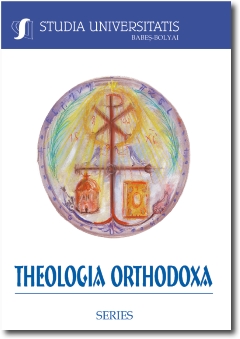THE DIVINE ENERGIES IN THE NEW TESTAMENT
THE DIVINE ENERGIES IN THE NEW TESTAMENT
Author(s): David BradshawSubject(s): Christian Theology and Religion
Published by: Studia Universitatis Babes-Bolyai
Keywords: divine energies; New Testament; the Pauline epistles.
Summary/Abstract: Starting from the well-known distinction made by Palamas between the divine essence and the divine energies, the author stops at the second element of this distinction and analyzes the divine energies from the New Testament biblical text point of view, especially from the standpoint of St. Paul’s epistles. By extracting those Pauline texts in which the word e)ne/rgeia and its cognates appear, Prof. Bradshaw wants to see if and to what extent the understanding of St. Paul regarding these terms is close to that of St. Palamas. In this way, the author hopes to prove – even indirectly – that there is always a link between the biblical theology and the subsequent theology developed by the Church Fathers and approved by the Church, that the Holy Tradition of the Church is nothing else but a development and a thorough explanation of the biblical text. This study will be split in two: in the first part, published in this issue of our review, the author analyzes the occurrences of three terms in the Epistles of St. Paul: e)ne/rgeia (the noun), e)nergei=n (the verb in its active form) and e)nergei=sqai (the verb in its middle/ passive form). The most important two conclusions of this analysis are as follows: e)ne/rgeia and e)nergei=n (active) refer only to supernatural agents (an innovation of the New Testament, especially of St. Paul), while e)nergei=sqai is always used in its passive, never in its middle voice, a finding with theological implications.
Journal: Studia Universitatis Babes-Bolyai - Theologia Orthodoxa
- Issue Year: LVI/2011
- Issue No: 1
- Page Range: 165-172
- Page Count: 8
- Language: English

